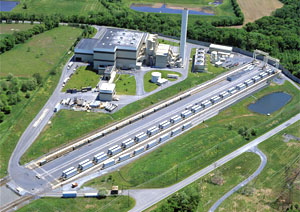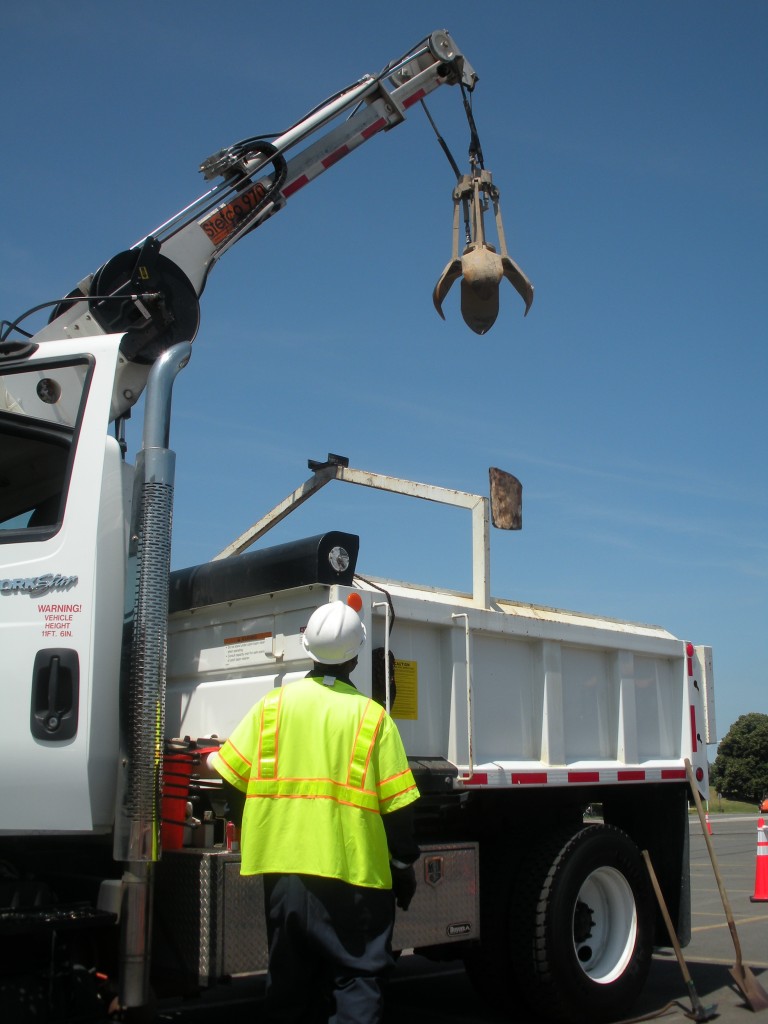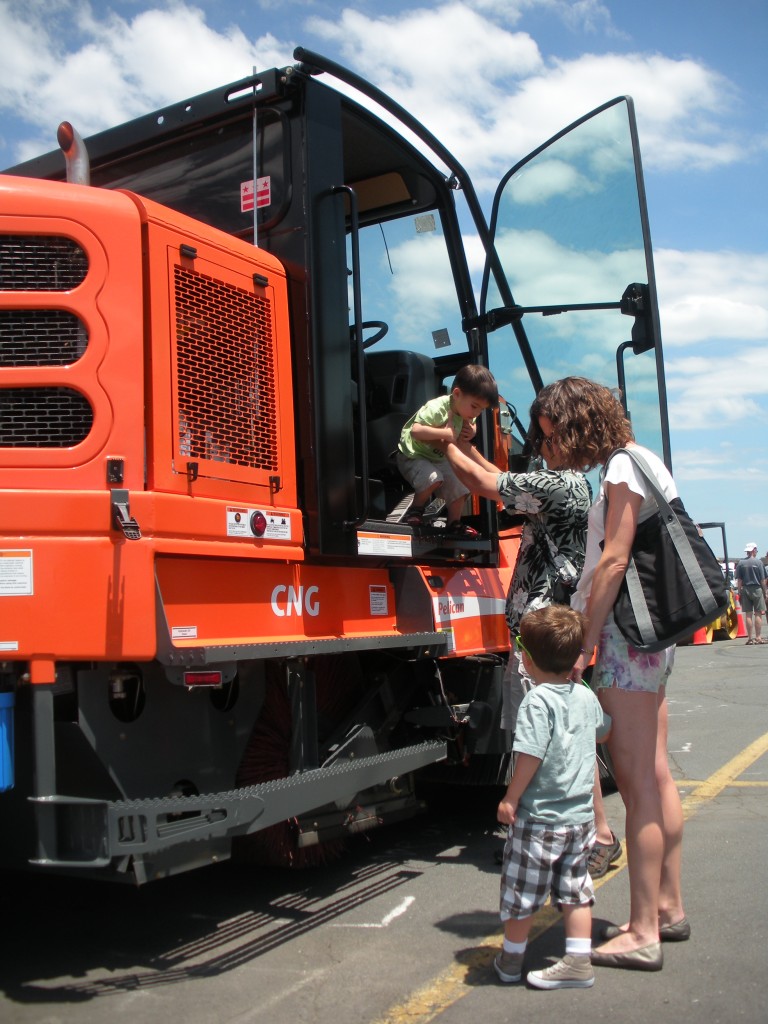By Wayne Savage
Greg Smith is on a mission to make Prince George’s County, Md., a zero-waste jurisdiction.
As a co-founder of Community Research, a public-interest research and advocacy group based in College Park, it’s not surprising that Smith has tackled an environmental issue. His group helped set up Zero Waste Prince George’s, which describes itself as 60 or so activists interested in “resource recovery from waste.” Efforts are afoot to build a statewide campaign.
But zero waste? Is it even possible?
Those who advocate zero waste don’t necessarily expect that every last scrap of trash will be recycled or composted. As Smith explains it, his group seeks to reduce the amount of waste that will be burned or buried by at least 90 percent.
Smith laid out the case for zero waste recently when he spoke in microsuburb Edmonston, Md., at the nonprofit Community Forklift, a cavernous warehouse filled with salvaged and surplus building materials offered for sale.
Advocates for zero waste define the concept expansively to include not only waste disposal (preferred term: resource recovery) but also a transformative approach to production and consumption of material goods.
The Zero Waste International Alliance, which grew out of a 2002 conference in Geneva, calls zero waste a visionary goal that “guide[s] people in changing their lifestyles and practices to emulate sustainable natural cycles, where all discarded materials are designed to become resources for others to use.” In a zero-waste world, according to this definition, there will be a systematic effort to “eliminate the volume and toxicity of waste and materials, conserve and recover all resources, and not burn or bury them.”
Based on an analysis conducted by Community Research, Smith said he believes it’s possible for Prince George’s County to recycle or compost at least 90 percent of its waste stream. And at current commodity prices for compost and recycled paper, metals, and plastics, he figures the county stands to lose millions of dollars annually by continuing to landfill its trash. That’s the core economic argument he takes to county officials when promoting zero waste.
“If what we’re proposing to them doesn’t work fiscally, it won’t work period,” he said.
Recycling and composting also are less polluting and create more local jobs than landfilling or incinerating trash, Smith said.
Smith points to the example of San Francisco, where Mayor Edwin M. Lee announced in October that his city had achieved a waste-diversion rate of 80 percent. San Francisco residents use three color-coded waste containers for curbside pickup: blue for recyclables, green for compostable waste, and black for waste sent to a landfill.
Moving toward zero
As it turns out, Prince George’s County and a few other jurisdictions in the Washington area have embraced the concept of zero waste ─ though they might define it in different ways ─ or have moved in that direction with pilot programs to collect food waste separately for composting.
Prince George’s County’s six-year Capital Improvement Program earmarks $100,000 to develop a zero-waste strategic plan during the current fiscal year, which began July 1. The money was included in funding for a new $35 million solid waste transfer station at the current site of the county’s yard waste composting facility.
Legislation adopted unanimously by the County Council in November established a food composting pilot program and set a recycling goal of 60 percent by 2020.
“We can build on these reforms to set Prince George’s County on a path to zero-waste, new green jobs in the resource recovery industry, and a cleaner healthier environment,” said Council Member Mary Lehman, a co-sponsor of the legislation, in a prepared statement.
In the District of Columbia, Mayor Vincent Gray’s wide-ranging sustainability plan calls for the city to “send zero solid waste to landfills per year and reduce total waste generation by 15%” by 2032. The plan also envisions reusing 20 percent of all construction and demolition debris, and diverting 80 percent of the city’s total waste through recycling, composting, and conversion.
To achieve those goals within the next two decades, Gray’s plan includes ambitious features:
■ a “pay-as-you-throw” pricing structure for solid-waste collection that charges residents based on the amount of trash they generate.
■ a ban on Styrofoam and non-recyclable plastic containers from food and retail outlets.
■ a container deposit law for all glass and plastic bottles.
■ a requirement that 75 percent of construction and demolition waste be reused or recycled.
■ a three-track waste-collection system, like the one used in San Francisco, that provides each household separate containers for general waste, recyclables, and compostable organic waste.
■ an organics transfer station to accept organic waste collected from or deposited by city residents. (In December, Gray announced $600,000 in funding to design and build up to four compost sites at urban farms or community gardens in the city.)
Curbside pickup of food waste for composting already is a reality, although on a limited basis, in two Washington suburbs. University Park provides the service for 150 households, and Takoma Park launched a six-month pilot program serving 300 households earlier this year
A burning question
The huge unknown lurking within the zero-waste movement is what role, if any, incineration will play. Burning solid waste is anathema to many environmentalists. Proposals to build electricity-generating “waste-to-energy” incinerators typically encounter robust opposition, including accusations that they release toxic byproducts and are sited in politically disenfranchised poor and minority communities.
Despite taking tentative steps toward some version of “zero waste,” neither Prince George’s County nor the District of Columbia has precluded incineration as an option. D.C.’s sustainability plan, for example, is focused on keeping waste out of landfills, ignoring the rigorous no-burn/no-bury definition of zero waste promoted by the Zero Waste International Alliance. The D.C. plan calls for a study of different waste-management options, including “waste-to-energy conversion,” though that presumably could include an innovative technology, such as anaerobic digestion, rather than incineration.
Smith fears that Prince George’s County could wind up sending waste to a planned incinerator in Frederick County, Md., or partnering with the District of Columbia to build an incinerator in the nation’s capital.
“We would rather Prince George’s County become the site of a regional composting facility than a partner in a regional incinerator,” he said.
According to Smith, 30 percent of the solid waste burned in an incinerator, by weight, is “left behind as ash laden with toxic materials.” (Montgomery County, Md., has reported that its incinerator reduces the volume of waste to approximately 10 percent of its initial size.)

Montgomery County Resource Recovery Facility (Photo from Montgomery County Division of Solid Waste Services website)
The U.S. Environmental Protection Agency notes on its website that although incineration reduces the need for landfill capacity, ash and other residue may contain toxic materials and “must be tested regularly to assure that the wastes are safely disposed [of] to prevent toxic substances from migrating into ground-water supplies.”
A 2011 report by the Environmental Integrity Project, a nonprofit organization dedicated to enforcement of anti-pollution laws, also drew attention to the smokestack emissions of incinerators. The report concluded that existing waste-to-energy incinerators in Maryland “typically emit more pollutants [such as mercury, lead and nitrogen oxides] per hour of energy produced than Maryland’s largest coal-fired power plants.”
Incinerators also release greenhouse gases, primarily carbon dioxide, at twice the rate of coal-fired power plants, according to the Environmental Integrity Project. The significance of that finding is controversial, with proponents of waste-to-energy incinerators arguing that much of the carbon dioxide comes from burning plant-based materials such as paper, which derived their carbon from the atmosphere. In this view, the carbon is simply being returned to its original location, so there is no net increase in the atmosphere.
Apart from environmental considerations, Smith cites the cost of waste incinerators, which he said can exceed $1 billion for a 1,500-ton-per-day facility.
“Ton for ton, incineration is the most expensive option,” he said.
The feasibility of waste-to-energy incinerators depends on securing a steady supply of combustible trash, prompting concerns that incineration acts as a disincentive to expanded recycling and composting. That dynamic seems to be at play in Lorton, Va., where the Fairfax County incinerator burns trash from the District of Columbia. Fairfax County sought D.C’s trash business in 2010 to help feed the incinerator and keep it profitable after the recession caused a drop-off in trash from other sources.
“[W]e want to operate at as close to capacity as possible,” said Joyce Doughty, director of Fairfax County’s solid-waste division, in a 2010 interview with the Washington Post.
D.C. retains incinerator option
The waste-management study called for in the District of Columbia’s sustainability plan will likely determine whether D.C. defines “zero waste” to include incineration ─ an outcome that would undercut the concept of zero waste promoted by Smith and other environmentalists.
When Gray, the District’s mayor, set aside $300,000 in December to fund the waste-management study, the D.C. Department of the Environment said the study would focus on “the costs and benefits of establishing a waste-to-energy conversion facility within the District.” That set off alarm among D.C. environmentalists, even without explicit mention of incineration. In a January letter to Gray, more than a dozen environmental groups argued that a waste-to-energy incinerator should not even be considered and therefore it was a waste of money to study such an option.
The city’s final solicitation for proposals from consulting firms, issued in March, retreats slightly from the language of Gray’s December announcement. Prospective consultants are told they must develop and compare alternative solid waste-management scenarios with the goal of achieving zero waste “first by producing less waste through reuse, recycling, and composting and then with what waste that remains capturing value from energy production.” Incineration is not explicitly mentioned as an option, nor is it foreclosed.
Hallie Clemm, deputy administrator of D.C.’s Solid Waste Management Division and a key player in the city’s approach to zero waste, has expressed a grimly pessimistic view of the potential for recycling. Speaking at a January forum organized by the D.C. Environmental Network, she said her own study of the city’s residential waste stream showed that no more than 35 percent can be recycled.
“After you’ve recycled it all and you’ve composted it all, and you’ve reduced what you can reduce, and you’ve gotten people not to buy as much and throw out as much, there is still a bunch of stuff that needs to be handled,” Clemm said.
Tackling a frequent objection to incineration, Clemm said that modern mass-burn incinerators are far less dirty than those of an earlier era.
“There’s been a lot of regulation that has been put into place that has made this a much cleaner way to go,” she said.
Ultimately, political realities make it unlikely that a waste-to-energy incinerator will be sited in the District of Columbia, according to Chris Weiss, executive director of the D.C. Environmental Network. Although the idea has been circulating in the Department of Public Works, the prospect of a D.C. incinerator probably lacks support elsewhere within the executive branch or on the City Council, he said.
“I think in the long run it’s not going to happen,” Weiss said.
For his part, Smith remains optimistic about the feasibility of his zero-waste vision for Prince George’s County ─ meaning no incinerator in sight. In an interview after his talk at Community Forklift, he even considered the possibility of going beyond the standard 90-percent benchmark for diverting solid waste from landfills or burning. He was asked if 100 percent is possible.
“Not right now,” Smith said, “not the way we manufacture things and sell things, but who knows?”
Wayne Savage is the owner of Mid-Atlantic Litter Cleanup Service, a Washington, D.C.-based public space litter-removal company. His background includes one summer as a garbage collector for the Columbia, Mo., Public Works Department.
There is one reader comment to this story below.



